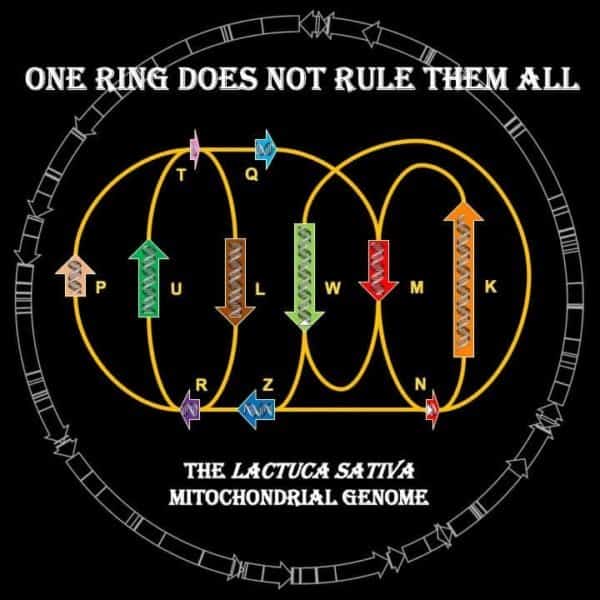The mitochondrion, “the powerhouse of the cell.” Somewhere back in the very distant past, something like a bacterium moved into another cell and never left, retaining some of its own DNA. For billions of years, mitochondria have passed from mother to offspring of most eukaryotic organisms, generating energy for the cell and playing roles in metabolism and programmed cell death.
All eukaryotes have them, but that does not mean that all mitochondria are the same. The mitochondria of plants are in fact quite different from those of animals. A new paper published Aug. 30 in PLOS Genetics by Alex Kozik, Beth Rowan and Richard Michelmore at the UC Davis Genome Center and Alan Christensen (who was on sabbatical at UC Davis from the University of Nebraska-Lincoln) shows just how different.
Plant mitochondrial genomes are larger and more complex than those in animal cells. They can vary considerably in size, sequence and arrangement, although the actual protein-coding sequences are conserved.
Plant mitochondrial genomes are almost universally believed to be single circular chromosomes (master circles) and scientific papers and textbooks typically show them as such, write Kozik and colleagues. But in recent years it has become evident that they are much more complex.
Chopped salad DNA
The researchers used long-read DNA sequencing and microscopy to work out the structure of mitochondrial genomes in domestic lettuce (Lactua sativa) and two wild relatives, L. saligna and L. serriola.
They convincingly show that plant mitochondrial DNA is a dynamic mixture of branching structures, ribbons, and rings. In fact, mitochondrial DNA was more often found as branched or linear structures than as circles and was never found as a large master circle.
While the genes themselves were conserved, blocks of genes were shuffled around. It’s rather like a chopped salad: the basic ingredients can be tossed around in different combinations.
“Our data suggest that plant mitochondrial genomes should be presented as multiple sequence units showing their variable and dynamic connections, rather than as circles,” the authors wrote. This correction of the widely-held notion of mitochondrial genome structure provides the foundation for future work on mitochondrial genome dynamics and evolution in diverse plants.
Additional coauthors on the study were Dean Lavelle at UC Davis, and Lidija Berke and Eric Schranz, Wageningen University, The Netherlands.
More information
The alternative reality of plant mitochondrial DNA: One ring does not rule them all (PLOS Genetics)


